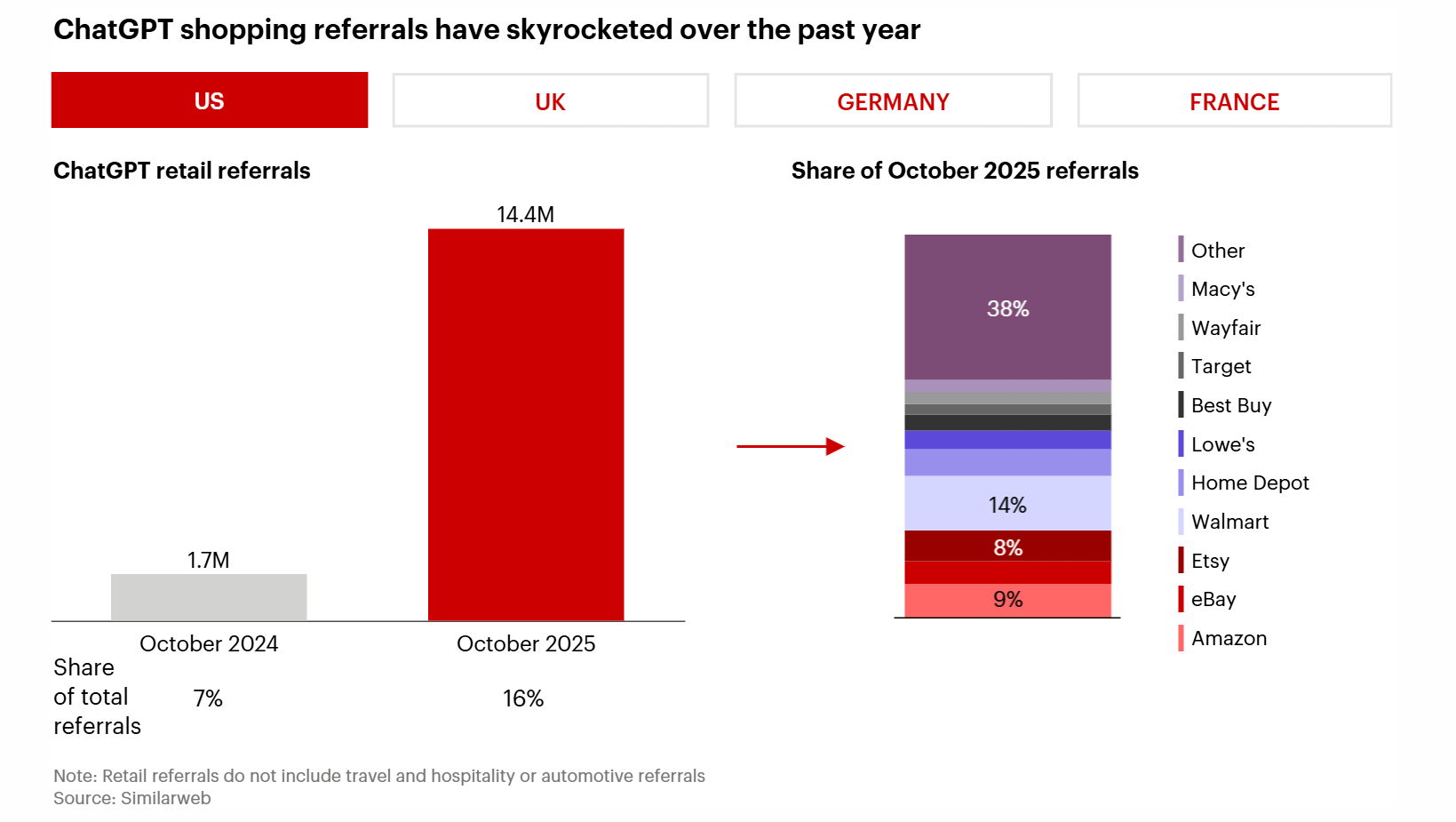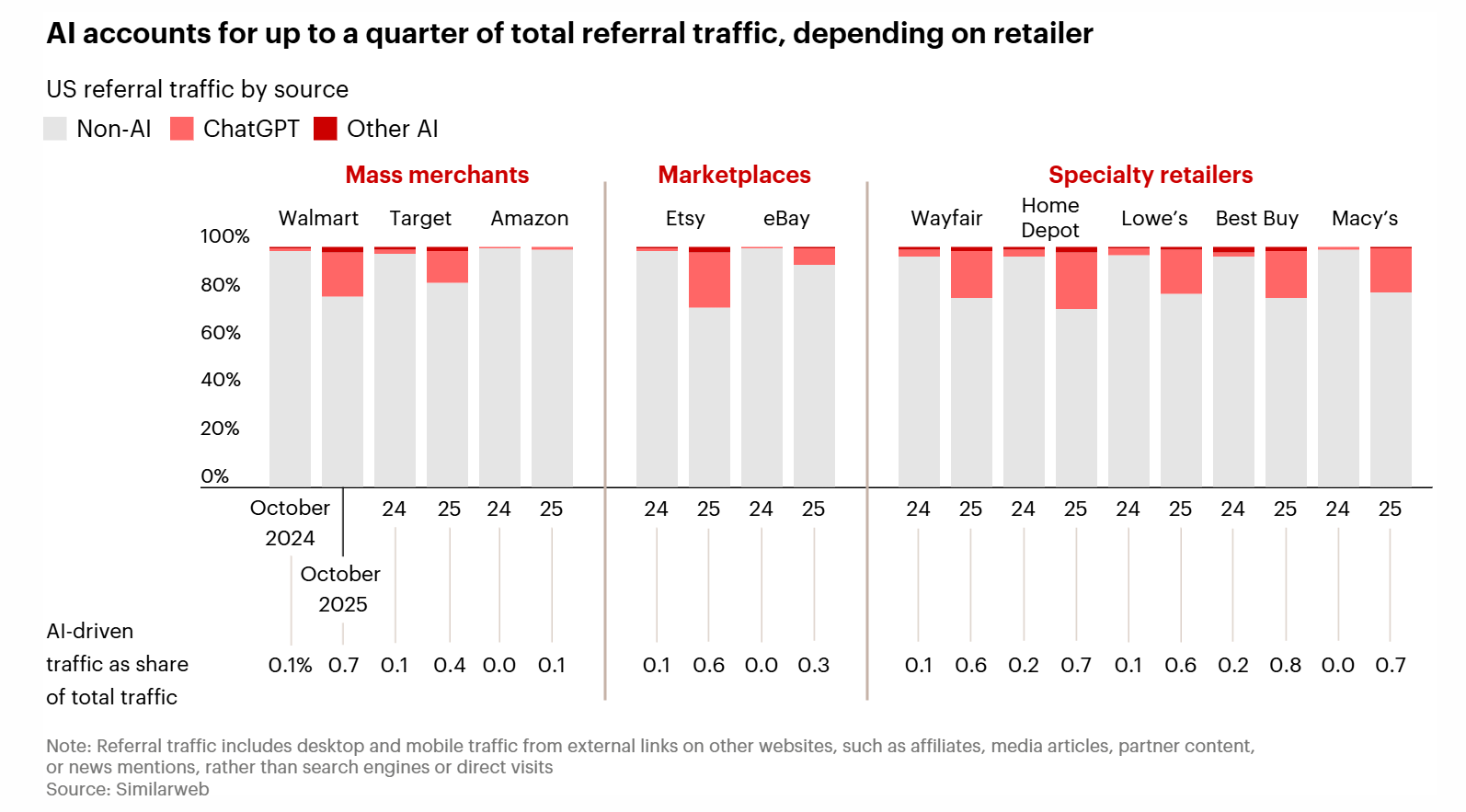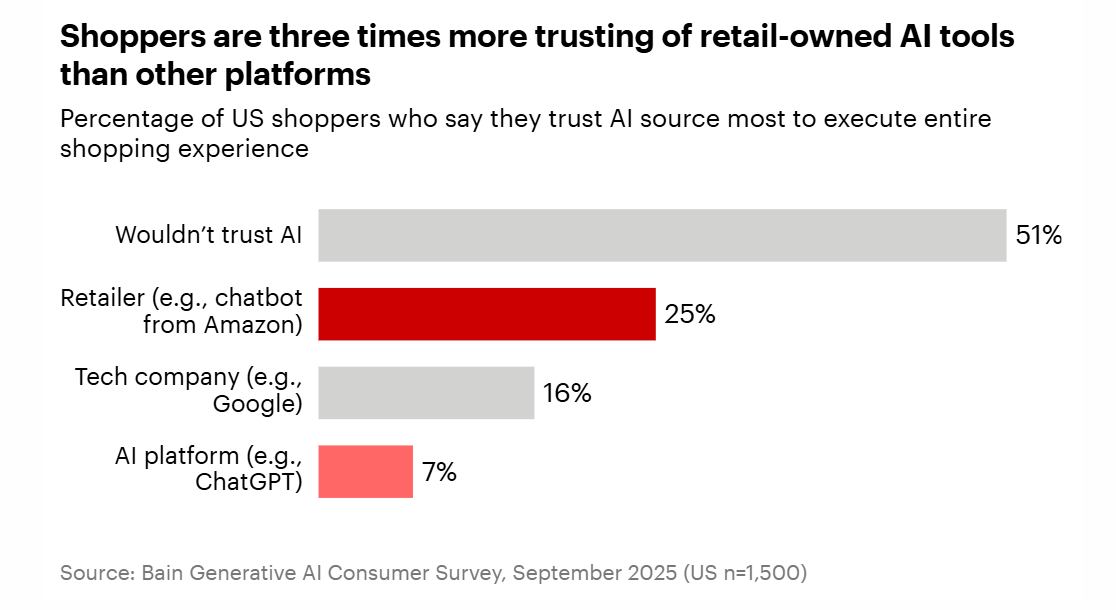The appeal of conversational commerce
First things first, let’s define “conversational commerce”.
When you ask queries to an AI model or chat bot about something you want to buy, and based on the AI’s research you then take decisions and complete the purchase by ordering the product on the retailer’s website, that’s conversational commerce. On the other hand, when you just ask query and the AI itself does the research, goes to a particular website, put the item in a cart, and then just ask for payment confirmation from you, that’s “agentic commerce”. In the latter case, you are largely out of the picture after the initial prompt except appearing in the final stage of the buying process again just to click “confirm payment”.
While most AI companies want to graduate to “agentic commerce”, we aren’t quite there yet. You can theoretically do it today, but the experience is usually so hit or miss that most people still do shopping online either through “conversational commerce” or just the traditional Google/Amazon search.
Of course, AI companies (and frankly speaking, everyone) have all broadly adopted “agentic commerce” as an umbrella term which includes conversational commerce as well even though they do seem sufficiently distinct to me. In a recent Stratechery interview, Michael Morton highlighted this distinction although he readily acknowledged that the ship has sailed. People are probably not going to adopt the term “conversational commerce” and we will have to live with the less clarifying term “agentic commerce”.
So, what’s the appeal of conversational commerce?
The appeal of conversational commerce is perhaps the greatest when you have to carefully think through the decision. If you are just buying diaper for your kid, conversational or agentic commerce would be an overkill. Just go to Amazon/Google, search for it, and click the buy button. Michael Morton had a good example when conversational shopping would essentially feel like “god mode” of online shopping:
a colleague had been planning to do a multi-month hike, and he had been nerding out on Reddit. Like, outdoor gear people, it’s a whole world of reviews, right? And he had spent two months looking for the right tent, he went into ChatGPT, explained where he was doing his hike, what he was going to be doing, and the first thing he got back was the tent he ended up buying.
It is very intuitive to me how such conversational shopping would drastically reduce our decision making process which is great news for both the end customers and merchants. There are likely a lot of leakages in the traditional product search process for more complex, conversational queries since it is fundamentally architected differently. Again, from Michael Morton’s interview:
What we started to do is we took a couple different products and we ran them through the traditional funnel and we’ll go back to the first example I used, shoes for flat-footed runners. What I did to start the exercise was I did hours and hours of research reading literally podiatry magazine posts, and every single post about the best running shoes for flat feet, I organized them, I ranked them, so what shoes got first and second, and we came out with some clear winners. “Here are the one, two, and three best running shoes for people with flat feet”, so we know what the best answer is.
Now let’s put it in Google search, and what you found was the PLAs at the top, the carousel you’ll see a set of icons that are horrible for getting the right answer.
for the work we did, one of the six was of the top ranked running shoes and when you looked at the models, their slugging percentage was, I would say 60 to 80% of the time, what they showed you out of the five icons were the best running shoe. So if they had five, they’d get one bad one.
So I sat down, I asked ChatGPT, I asked Gemini, I asked all the different models, “Hey, when I ask you what’s the best running shoe, what do you do?”, and they’ll tell you, “We go read all the expert websites”…Google is looking at this more formulaic. Who’s bidding? What’s the conversion rate? Where’s the information?
Given this context, it should be no surprise that shopping on ChatGPT is gaining momentum. While only ~7% of total referral shopping traffic in the US came from ChatGPT in October 2024, that number jumped to 16% a year later.

I should, however, note that even though AI (well, mostly ChatGPT for now) accounts for nearly quarter of total referral traffic for mass merchants, marketplaces, and specialty retailers in the US, AI-driven traffic as a percentage of total traffic is largely well below 1% today! So, if conversational continues to take off, it’s likely very, very early days here.

What I found quite interesting from this piece by Bain & Company is nearly half of the customers seem hesitant to trust AI for their shopping. Even more interestingly, customers seem to trust retailers’ on-site agents 3x more than third-party agents such as ChatGPT.

In fact, Amazon did point out in the recent earnings call why “agentic” commerce through third-party platform currently have too many limitations to be very useful for customers today. From Amazon’s 3Q’25 call:
“search engines are a very small part of our referral traffic and third-party agents are a very small subset of that. But I do think that we will find ways to partner. We have to find a way, though, that makes the customer experience good. Right now, I would say the customer experience is not -- there’s no personalization. There’s no shopping history. The delivery estimates are frequently wrong. The prices are often wrong. So we’ve got to find a way to make the customer experience better and have the right exchange value. But I do think that the exciting part of this and the promise is that AI and agentic commerce solutions are going to expand the amount of shopping that happens online. And I think that’s really good for customers, and I think it’s really good for Amazon because at the end of the day, you’re going to buy from the outfit that allows you to have the broadest selection, great value and continues to deliver for you very quickly and reliably. And I think that bodes well for us.”
While it could be hard to know to what extent Amazon’s portrayal of agentic commerce on 3P chatbots largely self-serving in nature, Bain’s survey work here seems to confirm Jassy’s comments in the earnings call. Rufus, which is Amazon’s own AI assistant that can cater to your conversational queries, may not be powered by a SOTA model, but customers can still find it more useful in most instances because of Amazon’s end-to-end control over your shopping experience, especially logistics and fulfillment. Again, from Amazon’s 3Q’25 call:
Rufus, our AI-powered shopping assistant has had 250 million active customers this year with monthly users up 140% year-over-year, interactions up 210% year-over-year and customers using Rufus during a shopping trip being 60% more likely to complete a purchase. Rufus is on track to deliver over $10 billion in incremental annualized sales.
In addition to “Daily Dose” (yes, DAILY) like this, MBI Deep Dives publishes one Deep Dive on a publicly listed company every month. You can find all the 64 Deep Dives here.
Current Portfolio:
Please note that these are NOT my recommendation to buy/sell these securities, but just disclosure from my end so that you can assess potential biases that I may have because of my own personal portfolio holdings. Always consider my write-up my personal investing journal and never forget my objectives, risk tolerance, and constraints may have no resemblance to yours.
My current portfolio is disclosed below: